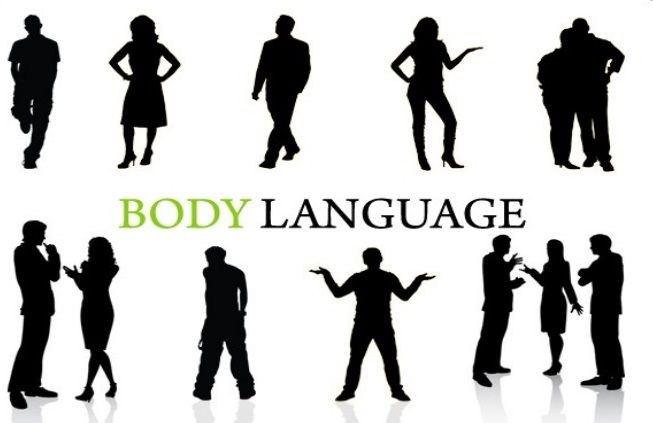Body language is known as a complementary process that plays a significant role alongside your speech to send an accurate message to the audience.
According to the Science and Technology News Agency from Shiraz, in creating communication, people express their ideas and feelings not only through verbal expression, but also through their facial expressions and body gestures. In negotiation sessions, when we talk to people in the meeting, we communicate with them much more than body language. For example, a smile and open hands are a sign of welcome. This shows that the movements of the human body express their feelings and thoughts, and even if a person tries to hide his feelings and thoughts with verbal language, his body language reveals everything. Therefore, learning body language is one of the most attractive and important parts of the international business negotiation process.
Although verbal and written communication skills are very important in business meetings, the importance of body language should not be overlooked. Body language, also known as body language, is derived from the fact that we often prefer to trust the other person’s body language when we see differences between their body language and their speech. Body language is defined as a non-verbal communication process that is a very important part of our communication method and includes various patterns such as facial expressions and gestures that people use to express their feelings in communication.For example, shaking the head means agreeing with the other party, or moving a wave of open hands, with open palms, is a gesture to say goodbye, or leaning back in a sitting position, lack of interest or boredom of the audience. it shows. Some studies have shown that more than 90% of communications are non-verbal, which indicates that when you say something, your body language may indicate something completely different.
An expert in the field of international trade relations told a reporter of the Science and Technology News Agency in Shiraz in this regard: “Body language in business meetings is the basis for establishing professional relations with business partners.” In business meetings, people convey the concepts that they show with their faces and body movements, although you do not say anything verbally, but they often convey the most effective goals and words to the audience. This means that we send different messages to the other person with our body postures, such as the position of the hands and feet, eye contact, biting the lips, hand contact with the face, looking down or up or around. On the other hand, the other party sends us messages, willingly or unwillingly, with their body language and non-verbal cues.

He added: “Negotiators in international business meetings know well how to use body language as well as how to read the body language of others to achieve their predetermined goals.” In a business meeting, the state of crossed arms, raised eyebrows and wandering eyes each send a specific signal to the audience.Therefore, negotiators in international business meetings should pay special attention to these issues so that they can negotiate regardless of what is said and said. In business negotiations, when you are aware of the other person’s body language, you can make changes to your nonverbal communication to achieve your goal. It is essential that we learn the skills of using and reading body language professionally in order to have a winning edge in business meetings by being aware of verbal and non-verbal messages together.
Dr. Mohammad Ali Moslehifar, referring to the importance of body language in different cultures from his experiences in trade negotiations in the international environment, said: “Body language between different cultures and countries, except for a series of slight differences, often have the same meaning.” . For example, he said: The sign of sixty hands in English-speaking countries means OK. In the United States, on the other hand, when they want to get in a car for free, they stand on the side of the road and move their sixties along the road. But the same body language does not mean good in Asian countries at all.
“When it comes to body language when it comes to attending international business meetings, there are different aspects to nonverbal actions that indicate the body language you use to communicate with business partners,” he added. The foreigner you choose can even introduce a part of your business identity. In this regard, Mosleh Far in an interview with a reporter of the Science and Technology News Agency in Shiraz introduced three important aspects of body language:
The international trade relations activist acknowledged that facial expressions are recognized as the first aspect of body language, meaning that many things can only be conveyed through facial expressions. Hence, facial expressions are the most expressive part of the body in non-verbal communication. Facial expressions can convey several emotions at the same time and not only have the ability to communicate a great deal, but it is a kind of non-verbal behavior that people can easily control. For example, smiles indicate happiness and approval, while frowns indicate anxiety and dissatisfaction.
He further explained: In face contact, eye contact is the most important part of body language. During the meeting and conversation, the person who shows that he is listening to the other person should also look into his eyes, because in many countries this move is a sign of respect. But it should also be noted that eye contact should not take too long.

He added: “Gestures are the second aspect of body language, especially the use of hand and head movements as an expression of the part of the body that people talk to, but it should be noted that different gestures are They can be meaningful in different cultures. The arms and legs of the person you are talking to are effective in transmitting nonverbal cues, or the person tying his or her hands over his or her chest may be angry or defensive.
“Body posture is known as the third aspect of body language, which is one of the most important signals in the effects of body language,” said the international trade relations activist. For example, different gestures and the use of fingers to indicate numbers or numerical values are all common ways to exchange information through body language. Just keep in mind that some gestures may have different meanings in different cultures, so it is important to research your gestures and behaviors before starting to negotiate internationally.
In the end, Dr. Moslehifar expressed his satisfaction with this conversation and the importance that the Science and Technology News Agency in Shiraz has given to the issue of international trade. He realizes that it is much more important than written and verbal relationships and also shows one of the most important aspects of people’s personality traits.
He added: “Apart from the importance of body language in international trade negotiations, the type of cover and appearance of the negotiator is also very important.” Accordingly, it is hoped that the Fars Science and Technology News Agency will publish a future report examining the type of cover and appearance of the negotiators in international business meetings.






